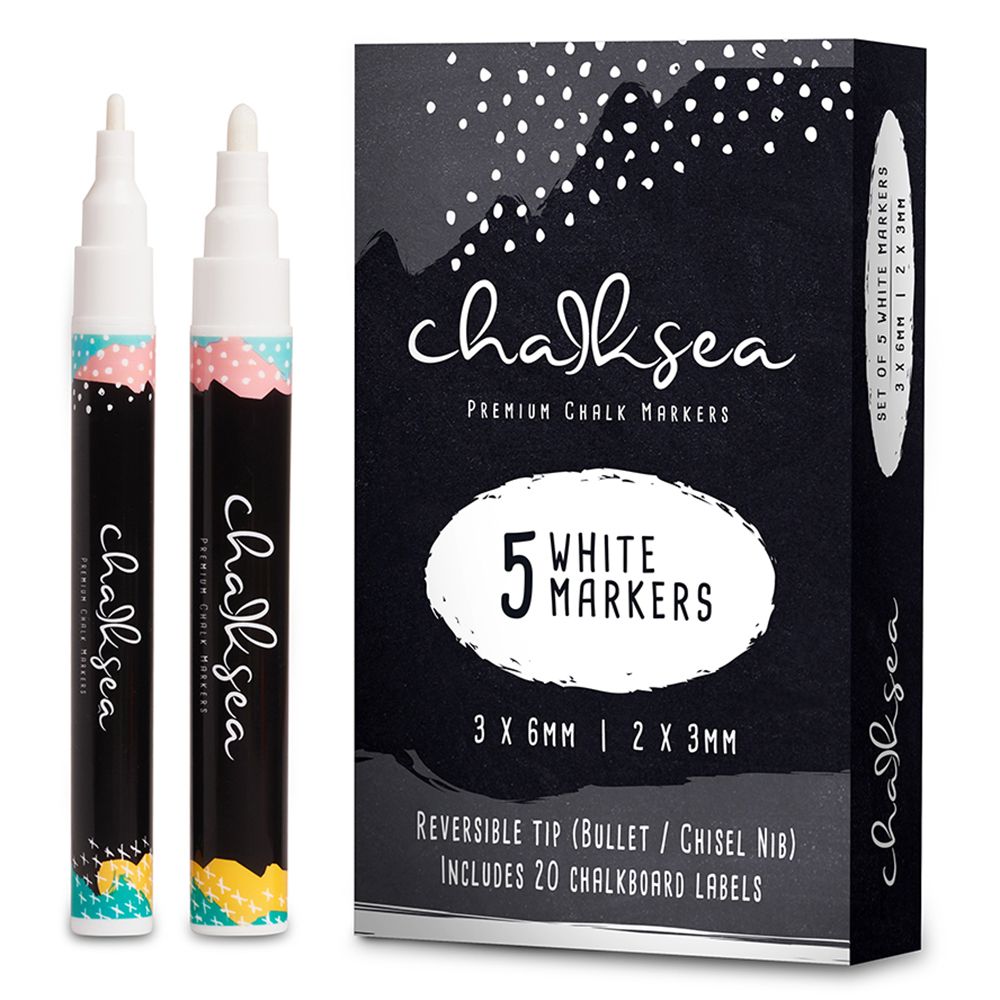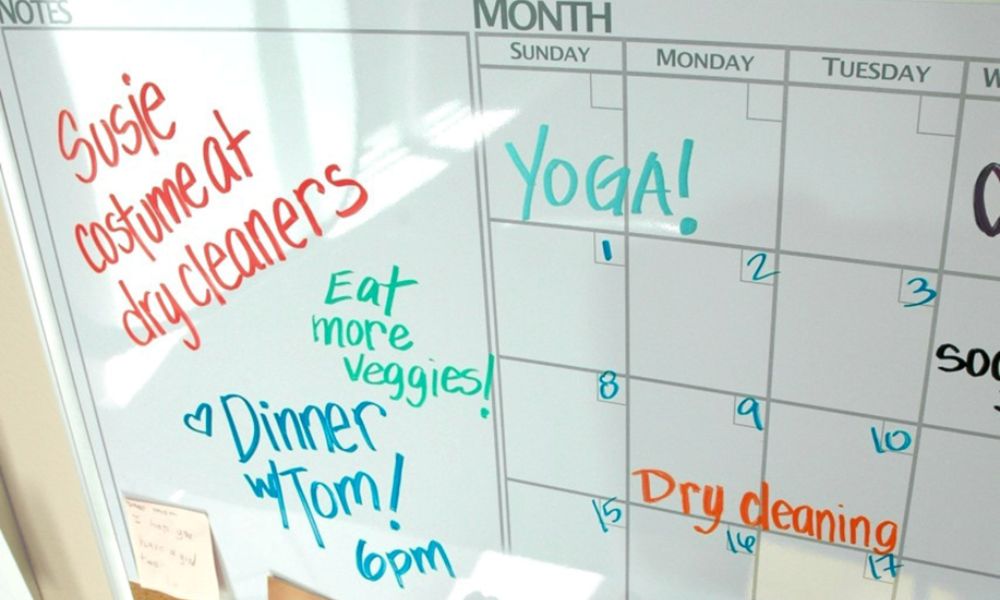Can I Use Chalk Markers On A Whiteboard? A Comprehensive Guide
Using chalk markers on a whiteboard has become a popular trend, but is it really the right choice? Many people are curious about the compatibility of chalk markers with whiteboards and the potential effects it may have on the surface. In this article, we will explore everything you need to know about using chalk markers on whiteboards.
Whiteboards have long been a staple in classrooms, offices, and homes for their versatility and ease of use. However, with the rise of creative designs and vibrant colors, chalk markers are increasingly being considered as an alternative for writing on whiteboards. Understanding the implications of this choice is crucial for maintaining your whiteboard's longevity and appearance.
Whether you're a teacher, office worker, or a DIY enthusiast, knowing how chalk markers interact with whiteboards can help you make an informed decision. Let's dive into the details and uncover the pros, cons, and best practices associated with this practice.
Read also:Good Food At Rudys Bar And Grill A Great Place To Eat
Table of Contents
- Introduction
- Are Chalk Markers Compatible with Whiteboards?
- Effects of Chalk Markers on Whiteboard Surfaces
- How to Clean Chalk Markers from a Whiteboard
- Alternatives to Using Chalk Markers on Whiteboards
- Benefits of Using Chalk Markers on Whiteboards
- Drawbacks of Using Chalk Markers on Whiteboards
- Best Practices for Using Chalk Markers on Whiteboards
- Frequently Asked Questions
- Conclusion
Introduction
Whiteboards have been a go-to tool for communication and brainstorming for decades. However, as creativity continues to evolve, many are exploring new ways to enhance their whiteboard experience. One such method involves using chalk markers on whiteboards. But can you truly use chalk markers on a whiteboard without damaging the surface? This question is at the heart of today's discussion.
Chalk markers offer vibrant colors and a unique matte finish, making them appealing for artistic designs and presentations. However, their compatibility with whiteboards is often questioned due to concerns about staining and durability. This article aims to provide clarity on this topic while offering practical advice for those interested in experimenting with chalk markers.
Are Chalk Markers Compatible with Whiteboards?
Understanding the Basics of Chalk Markers
Chalk markers are water-based and designed to mimic the look of traditional chalk. They are commonly used on porous surfaces like chalkboards, glass, and metal. While they can technically be used on whiteboards, the results may vary depending on the type of whiteboard and its surface finish.
Modern whiteboards are typically made from melamine or porcelain surfaces. Melamine boards are more prone to staining when used with chalk markers, while porcelain boards are more resistant. Understanding the material of your whiteboard is crucial before deciding to use chalk markers.
Compatibility Factors
- Surface Type: Porcelain whiteboards are more durable and less likely to stain compared to melamine boards.
- Ink Composition: Water-based chalk markers are easier to remove than oil-based ones.
- Usage Frequency: Occasional use is less likely to cause issues than regular use.
Effects of Chalk Markers on Whiteboard Surfaces
One of the primary concerns when using chalk markers on whiteboards is the potential for staining. Unlike dry erase markers, chalk markers leave a residue that can be challenging to remove if not addressed promptly. Over time, this residue can build up and affect the board's appearance and functionality.
Staining is more common on melamine boards due to their porous nature. Porcelain boards, on the other hand, are more resistant to stains but still require proper cleaning techniques to maintain their pristine condition.
Read also:The Home Depot Your Ultimate Guide To Home Improvement And Diy Projects
How to Clean Chalk Markers from a Whiteboard
Step-by-Step Cleaning Guide
Cleaning chalk marker residue from a whiteboard requires patience and the right tools. Follow these steps to ensure effective cleaning:
- Use a Damp Cloth: Start by wiping the board with a damp cloth to loosen the ink.
- Apply Rubbing Alcohol: If the residue persists, apply a small amount of rubbing alcohol to a clean cloth and gently rub the affected area.
- Finish with a Dry Erase Cleaner: Use a commercial whiteboard cleaner to restore the board's surface.
Preventive Measures
- Use water-based chalk markers instead of oil-based ones.
- Clean the board immediately after use to prevent ink from drying and setting.
- Avoid heavy usage of chalk markers on the same area repeatedly.
Alternatives to Using Chalk Markers on Whiteboards
If you're concerned about the potential drawbacks of using chalk markers on whiteboards, there are several alternatives to consider:
- Dry Erase Markers: Designed specifically for whiteboards, these markers offer vibrant colors and easy removal.
- Chalkboard Paint: Convert your whiteboard into a chalkboard by applying chalkboard paint, allowing you to use traditional chalk or chalk markers without issues.
- Overlay Films: Use a transparent overlay film on your whiteboard to create a writable surface that can be easily replaced.
Benefits of Using Chalk Markers on Whiteboards
Despite the potential challenges, using chalk markers on whiteboards can offer several advantages:
- Vibrant Colors: Chalk markers provide a wide range of colors, making your designs more visually appealing.
- Unique Finish: The matte finish of chalk markers adds a distinctive touch to your presentations.
- Creative Flexibility: They allow for more artistic freedom compared to traditional dry erase markers.
Drawbacks of Using Chalk Markers on Whiteboards
While chalk markers have their benefits, there are also notable drawbacks to consider:
- Staining Risk: Chalk markers can leave permanent stains on melamine boards if not cleaned properly.
- Time-Consuming Cleaning: Removing chalk marker residue requires more effort than erasing dry erase ink.
- Surface Damage: Frequent use may lead to surface wear and tear over time.
Best Practices for Using Chalk Markers on Whiteboards
To minimize the risks associated with using chalk markers on whiteboards, follow these best practices:
- Test the markers on a small, inconspicuous area before widespread use.
- Choose high-quality, water-based chalk markers for easier removal.
- Clean the board immediately after use to prevent ink from setting.
- Limit the use of chalk markers to occasional projects rather than daily tasks.
Frequently Asked Questions
Can chalk markers damage a whiteboard?
Chalk markers can potentially damage a whiteboard, especially melamine boards, by causing stains or residue buildup. Proper cleaning techniques and using high-quality markers can mitigate these risks.
Are chalk markers erasable from whiteboards?
Yes, chalk markers can be erased from whiteboards, but it requires more effort than dry erase markers. Using a damp cloth, rubbing alcohol, and a whiteboard cleaner can help remove the ink effectively.
What is the best type of whiteboard for using chalk markers?
Porcelain whiteboards are the best option for using chalk markers due to their durability and resistance to stains compared to melamine boards.
Conclusion
In summary, while it is possible to use chalk markers on whiteboards, it is essential to weigh the benefits and drawbacks carefully. Understanding your whiteboard's material, choosing the right type of chalk markers, and following proper cleaning techniques can help you achieve the desired results without compromising the board's integrity.
We encourage you to share your experiences or ask questions in the comments section below. Additionally, feel free to explore other articles on our site for more tips and insights into optimizing your whiteboard usage.
Data Source: OfficeWorks, Amazon, Staples.


